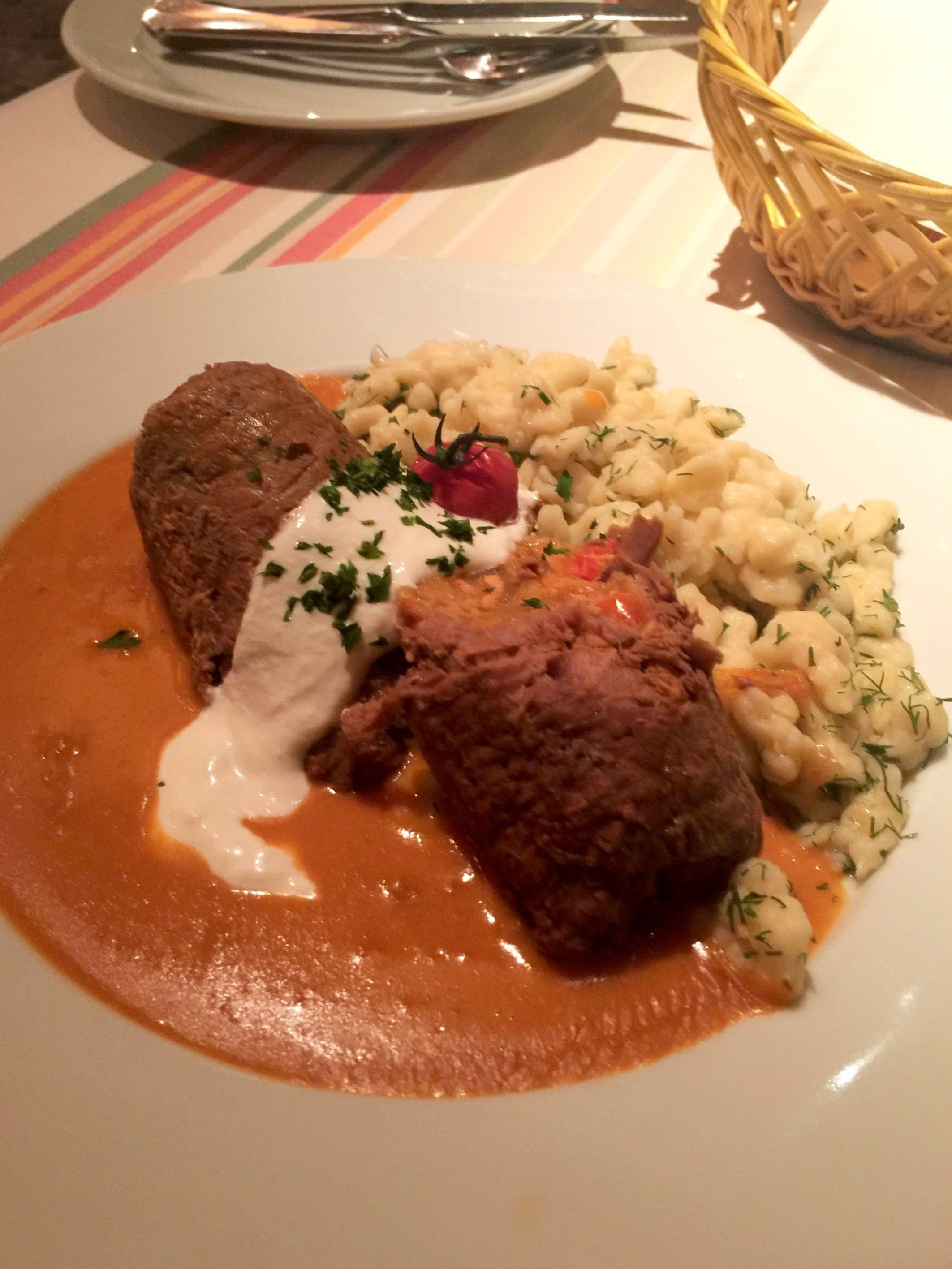Budapest: Grand Architecture and More Strudel Than I Could Handle
Budapest was the first stop on our road trip through Central Europe, and what a way to kick things off. We flew in from Barcelona, picked up a rental car, and from there, we’d be making our way through Bosnia, Croatia, and Slovenia—our first time in this part of Europe, with no idea what to expect. And yet, within moments of arriving, we already knew: we were in for something special.
Everything in Budapest is big, bold, and dramatic—the architecture, the river, the thermal baths, the sheer amount of paprika they’re willing to use on a single dish. It’s completely over the top, in the best possible way.
Budapest is a visual feast. Walking around, it feels like someone handed a blank check to every architect who ever worked here and just said, "Go nuts."
On one block, you’re looking up at ornate Beaux-Arts and Belle Époque masterpieces—think wrought iron balconies, soaring windows, gold leaf where it doesn’t even need to be, but why not? Next, you’re sitting an Art Deco cafe eating exquisite pastries, and then stepping out, turning a corner and run straight into a Brutalist concrete stunner. Somehow, Budapest makes it all work.
Photo courtesy of Thomas Depenbusch, Wikimedia
If Budapest’s architecture is a grand display of elegance and excess, its desserts follow the same philosophy—and no cake embodies that better than the Dobos Torte.
This legendary Hungarian dessert isn’t just a cake; it’s a statement. Endless layers of sponge cake, each separated by a silky, chocolate buttercream, topped with a golden caramel layer. It’s rich and decadent, yet somehow delicate, and every bite reminds you that Hungarians take their pastries very, very seriously.
Created in the late 1800s by pastry chef József Dobos, this cake was meant to be innovative and long-lasting—a luxury dessert that could hold up for days without drying out (something its buttery layers achieve effortlessly). It became instantly iconic, beloved across Europe and cemented as a Hungarian classic.
Now that we started talking about food, let me just say that the cuisine in Budapest was just wow. I expected it to be very interesting, since we had not been to this part of the world before, but it was not only new to us- it was delightful and exquisite. Here are some of the highlights that we are still thinking about.
Chicken Paprikash – tender chicken swimming in a rich, velvety sauce that’s so deeply paprika-infused, it might actually be the national color. Usually served with spätzle, (tiny extruded dumplings that soak up all that saucy goodness) this dish hits the spot every time.
Goulash – I thought I knew goulash. I did not. This is a soul-warming stew, packed with slow-cooked beef, root vegetables, and deep flavors may be one of the most satisfying things ever.
Chicken Schnitzel – Hungarians take their schnitzel seriously, and honestly, I respect them for it. This crispy, golden-fried masterpiece is served alongside potatoes, or you guessed it-spätzle. The sheer size of it will put a smile on your face.
Chiken schnitzel and turkey with apricot glaze.
Strudel – Like many European cities, Budapest’s major flaw is that there are too many incredible pastry shops and not enough time (or stomach space). The cherry strudel is sooo good —but the poppyseed version? Life-changing. The filling is like nothing I’ve ever had and it is simply not to be missed.
If you come to Budapest and don’t eat your body weight in strudel, what are you even doing?
Every place we ate we lovely, but out absolute favorite was definitely Menza. Not only was the food incredible, but the mid-century interior was stylish and cool, retro and chic, making our dinner spectacular. What did we eat? Beef paprikash with dill spätzle and grilled duck liver with sour cherry sauce.
Bring me that paprikash!
I think my happy place is a mid-century interior with scandalously good food.
The beef paprikash with dill spätzle was divine!
The duck was cherry, cherry good! :D
With a cuisine this decadent and delicious, it’s now wonder Hungarians have a strong apertif to have post meals. The national apéritif, Unicum, is made from more than 40 herbs. It has a deep, earthy herbaceous bitterness that somehow manages to be medicinal and intoxicating at the same time. This bold, complex drink is a centuries-old tradition, instantly recognizable in that iconic round bottle. Then there’s Unicum Szilva, the plum version, which softens the sharp herbal intensity with a hint of fruity warmth. It’s smoother, slightly sweeter, but still carries that punch.
Believe it or not, we did stuff in Budapest besides eat. It is a lovely city to walk around and wander. Strolling through tree lined streets and admiring the residential buildings and store fronts was just as enjoyable as visiting main sights.
The Danube river slices the city in two, separating the hilly, historic Buda from the flat, lively Pest. At night, the city lights twinkle romantically on the water. Sitting along the Danube like it knows it’s the main character (and honestly, it is) is the Hungarian Parliament Building is breathtaking.
We also spent an afternoon at Széchenyi Baths, Budapest’s most famous thermal bath complex. Floating around in those giant outdoor and indoor pools was a real treat, only mildly spoiled by an influencer posing for photos with her entourage (and not even getting wet). You can understand why we chose not to take any photos here and instead just soaked our troubles away and enjoyed the moment.
Photo courtesy of Marc Ryckaert, Wikimedia
You can see why it’s easy to fall in love with Budapest. One moment, you’re marveling at grand, old-world architecture; the next, you’re soaking in thermal baths. And in between, you’re eating some of the best food anywhere. Our 3 days in Budapest felt way too short. This city is a stunner and was a great way to kick off our Central European road trip.










